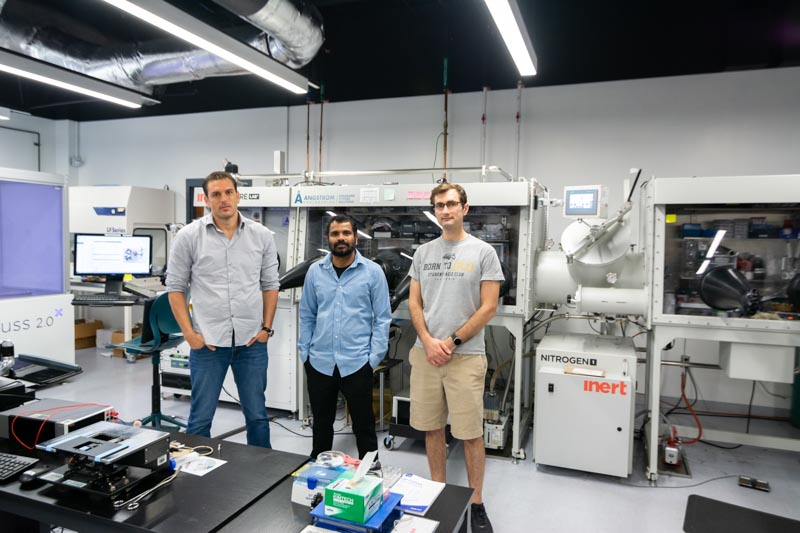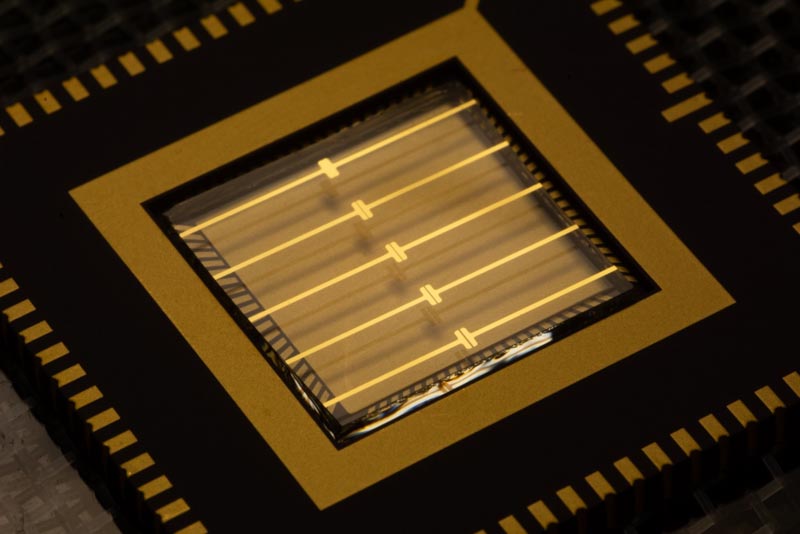Infrared Technology Research by USM Professor’s Group to be Published in Prestigious Science Journal
Wed, 06/09/2021 - 02:19pm | By: Van Arnold
 Breakthrough research on infrared optoelectronics conducted by polymer Professor Jason
Azoulay and his team at The University of Southern Mississippi (USM) is being highlighted
in the prestigious journal Sciences Advances.
Breakthrough research on infrared optoelectronics conducted by polymer Professor Jason
Azoulay and his team at The University of Southern Mississippi (USM) is being highlighted
in the prestigious journal Sciences Advances.
The group’s paper, officially titled: “Broadband infrared photodetection using a narrow bandgap conjugated polymer” appears in the June edition of the highly acclaimed scientific publication.
Azoulay, associate professor in the School of Polymer Science and Engineering at USM, points out that the detection of infrared light forms the foundation for many modern scientific, industrial, energy, medical, and defense applications. Despite widespread efforts in scientific and engineering disciplines, photodetection from shortwave-to-longwave infrared (SWIR-LWIR, ~1-14 µm) remains dependent upon archetypal crystalline inorganic semiconductor devices that are produced using complex manufacturing systems within specialized fabrication facilities.
“These suffer from limited modularity, intrinsic fragility, high-power consumption, require cooling to achieve reasonable performance, and - are largely incompatible with silicon-based technologies,” said Azoulay. “These attributes and very high costs are prohibitive for many applications and emerging technologies.”
Conjugated polymers are soft matter conductors that overcome critical manufacturing and operational drawbacks inherent to inorganic materials.
 “We have a long-standing effort in the development of infrared technologies based
on conjugated polymers and develop new materials, soft matter systems, and device
paradigms that enable optical to electrical transduction of infrared light,” said
Azoulay. “This work demonstrates the first example of a high-performance photoconductive
detector that used a conjugated polymer active layer that senses photons across the
SWIR-LWIR portion of the electromagnetic spectrum.”
“We have a long-standing effort in the development of infrared technologies based
on conjugated polymers and develop new materials, soft matter systems, and device
paradigms that enable optical to electrical transduction of infrared light,” said
Azoulay. “This work demonstrates the first example of a high-performance photoconductive
detector that used a conjugated polymer active layer that senses photons across the
SWIR-LWIR portion of the electromagnetic spectrum.”
Azoulay group members who contributed to the research include: polymer research scientist Dr. Naresh Eedugurala, post-doctoral researcher Dr. Lifeng Huang, and graduate student Kevin Mayer. They collaborated with Dr. Jarett Vella from the Sensors Directorate at the U.S. Air Force Research Laboratory and Professor Tina Ng from the Department of Electrical and Computer Engineering at the University of California San Diego. Both are regarded as leading experts in infrared optoelectronics and organic-based semiconductor devices.
Dr. Chris Winstead, Dean of USM’s College of Arts and Sciences, says that Azoulay’s work has the potential to revolutionize infrared detection technologies for uses ranging from consumer products to advanced sensor systems for scientific and defense applications.
“As an optical sensor developer myself, I know that there is a vast market for improved infrared sensors. Scientific advances like this work from Dr. Azoulay’s lab can form the foundation for a whole new generation of products,” said Winstead.
Azoulay notes that the project took approximately three years to complete, however, the materials development aspect has been ongoing since he arrived at USM in 2014. Azoulay serves as principal/corresponding author of the paper, while Vella and Huang are co-first authors.
As Azoulay explains, the growth of new applications, performance requirements, and needs for miniaturization has outpaced the capabilities offered by current materials, devices, and manufacturing infrastructure; thereby limiting the development of new technologies.
Emerging technologies having global societal impacts in renewable energy, healthcare/medicine, information science, defense, building and machine automation, and consumer applications require ubiquitous, lower-cost, and uncooled infrared photodetection technologies.
“Thus, there remains a need for new semiconductor materials with figures of merit similar to inorganic materials, but that also provide significant cost reductions, scalable fabrication, heterogeneous integration, uncooled operation, geometric forms, and mechanical properties that are not available using current technologies,” said Azoulay. “This work provides a fundamentally new platform for broadly applicable, low-cost, ambient temperature infrared optoelectronics.”
The complete paper can be found here: https://advances.sciencemag.org/content/7/24/eabg2418
About Sciences Advances
Science Advances is the American Association for the Advancement of Science’s (AAAS) open access multidisciplinary journal, publishing impactful research papers and reviews in any area of science, in both disciplinary-specific and broad, interdisciplinary areas. The mission of Science Advances is to provide fair, fast, and expert peer review to authors and a vetted selection of research, freely available to readers. Led by a team of distinguished scientists and allowing flexible article formats, Science Advances supports the AAAS mission by extending the capacity of Science magazine to identify and promote significant advances in science and engineering across a wide range of areas. To learn more, visit: https://advances.sciencemag.org/